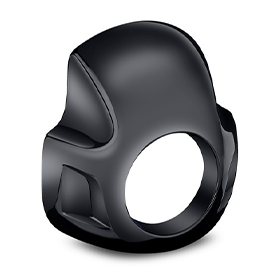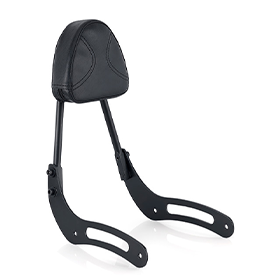- Table of Contents
1. What is a Drive train?
Every motorcycle needs power to be delivered from the engine to the rear wheel through a mechanism. The drive train system fulfills this purpose, with three types of drive train systems being used. Each has its own pros and cons, being fitted on different types of motorcycles depending on their intended purpose.
1.1 Chain Drive

Photo Credit: @moto-piece
The most common mechanism used to transmit power from the engine to the rear wheel is via chains and sprockets. The chain drive system includes two sprockets and a chain. The size of sprockets and the chain can vary from motorcycle to motorcycle. The smaller sprocket is attached to the engine’s output shaft and the bigger sprocket is attached to the rear wheel. The size of two sprockets can also determine a motorcycle’s torque and speed.
Usage
The chain drive system is widely used as a final drive on most motorcycles. It is compatible with lightweight performance-oriented motorcycles with low transmission power. Most SPORTS, DIRT, naked, and street motorcycles have a chain drive system.
Advantages
The chain drive system is the most cost-effective drive system. It is lightweight, easy to replace, and takes less time to repair. They have highly efficient power transmissions that only suffer a power loss percentage between 1% to 4%. They can operate in any weather conditions and suffer lesser slips.
Disadvantages
The chain drive system needs to be cleaned and lubricated frequently. Also, they tend to wear out faster than the belt and shaft drives. In harsh environments, the chain can easily split and break. If the chain drive train is too heavy, the rider will experience fluctuations in speed. Both sprockets must be aligned properly to reduce power loss.
1.2 Belt Drive

Photo Credit: @bike-eu
The belt drive train has two sprockets and a belt wrapped around them that rotate. The smaller sprocket is attached to the engine’s output shaft and the bigger sprocket is attached to the rear wheel. Both sprockets have small teeth so that they properly fit against the belt. The belt is made of rubber or a strong synthetic material that can last a long time.
Usage
Most cruisers are equipped with a belt drive train. Most HARLEY DAVIDSON cruiser lineups have belt-drive train systems, like the Softail models. Harley, INDIAN, VICTORY, KAWASAKI, YAMAHA, and HONDA cruisers tend to be fitted with belt drive systems.
Advantages:
The belt drive train does not need to be cleaned regularly and is known for its cleanliness, durability, and longevity. They provide good swing arm stability and improve handling. A well-maintained belt drive can easily last 100,000 kilometers or even longer. Unlike chain drives, belt drives are relatively maintenance-free and run smoothly without needing any sticky lube. The belt drive helps the engine run smoother, is less jerky, and produces less noise than the chain drive train. The belt drive train also weighs less than the shaft and chain drive trains.
Disadvantages
Belt drive trains suffer from an overall power loss ranging from 9% to 15% depending on how well the system is maintained. Having to repair or change out the belt drive train tends to be more expensive than with the chain drive train.
ALSO READ: HERE’S ALL YOU NEED TO KNOW BEFORE BUYING A CRUISER MOTORCYCLE
1.3 Shaft Drive

Photo Credit: @bikesrepublic
The shaft drive train has a shaft that connects the engine output shaft via a universal joint that facilitates the transmission of rotary power. There is also a shaft connected to the rear wheel at the spiral bevel gear. The spiral bevel gear is responsible for rotating the shaft perpendicularly so that the wheel turns. This entire system is covered with lubricant and sealed to prevent the buildup of dust and debris.
Usage
Shaft drive trains are often fitted onto larger motorcycles that produce high amounts of torque and are capable of traveling over long distances. These include touring, sports-touring, or adventure-touring motorcycles. The shaft drive is often installed on Japanese and European heavyweight motorcycles. BMW has had its motorcycles fitted with shaft drive systems since 1923.
Advantages
Shaft drive trains are the steadiest and smoothest of all the drive train systems. If the shaft drive is designed well and regularly maintained, it can last as long as the life of a motorcycle.
Disadvantages
Shaft drive trains are the most expensive and heaviest of the three drive train systems. As they require high torque to move, they are not installed on many lightweight or economy-oriented motorcycles. They also suffer the highest engine power loss ratio between 20% to 25%.
2. Conclusion
Chain, belt, and shaft drive train systems have their advantages and disadvantages. Each type of drive train is suited for specific purposes and models. For example, sports motorcycles are performance-oriented motorcycles capable of high speeds and suffer less from transmission power loss. For this type of motorcycle, a chain drive system would be the best option for these motorcycles. Meanwhile, cruisers and touring motorcycles have belt and shaft drive train systems. To be able to carry SADDLEBAGS or extra LUGGAGE BAGS, these motorcycles need durable drive train systems to ensure they can travel long distances with little issue.
















Leave a comment
All comments are moderated before being published.
This site is protected by reCAPTCHA and the Google Privacy Policy and Terms of Service apply.